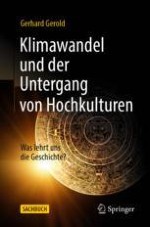2021 | OriginalPaper | Chapter
5. Das Rätsel der Nazca-Kultur
Author : Gerhard Gerold
Published in: Klimawandel und der Untergang von Hochkulturen
Publisher: Springer Berlin Heidelberg
Activate our intelligent search to find suitable subject content or patents.
Select sections of text to find matching patents with Artificial Intelligence. powered by
Select sections of text to find additional relevant content using AI-assisted search. powered by
